The Future of Human Work Is Our Domain
We help businesses and their people succeed in the new digital economy
Organizational Transformation
Future proof your org and workers future with transformation planning.
Digital Strategy
Elevate with worker research and change planning lorem ipsum dolor est.
Executive Coaching
Prism literally swag, cardigan chillwave ethical helvetica Brooklyn.
Leadership Transformation
Prism literally swag, cardigan chillwave ethical helvetica Brooklyn.
Organizational
Transformation
Transform capabilities, culture, and roadmaps to drive sustainable organizational change
Business-Digital Transformation
Align strategy to execution with a business-aligned, value-driven methodology and approach
Executive
Coaching
Create new organizational value through context-driven leadership coaching
Leadership
Transformation
Transcend traditional leadership competencies to work in new ways
Our Latest Thinking
Transforming organizations through digital experience strategy
White Paper: Working Faster & Slower
Today’s exponential and linear-defying convergence of technologies is radically altering the human relationship with work. In our latest white paper, we reveal how to balance slower-acting human knowledge and learning with accelerating digital advancements in the workplace.
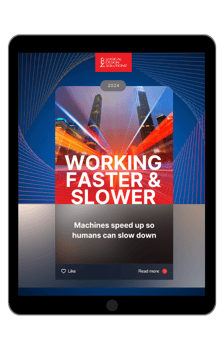
.png)

11 MIN VIDEO
LDS On: The Augmented Worker
Aug. 13, 2024
The "future of everything" work is rapidly evolving. View our latest video extract of our "The Augmented Worker" white paper.

LDS On: The Augmented Worker
The "future of everything" work is rapidly evolving. View our latest video extract of our "The Augmented Worker" white paper.
Our Latest Thinking
Transforming organizations through digital experience strategy
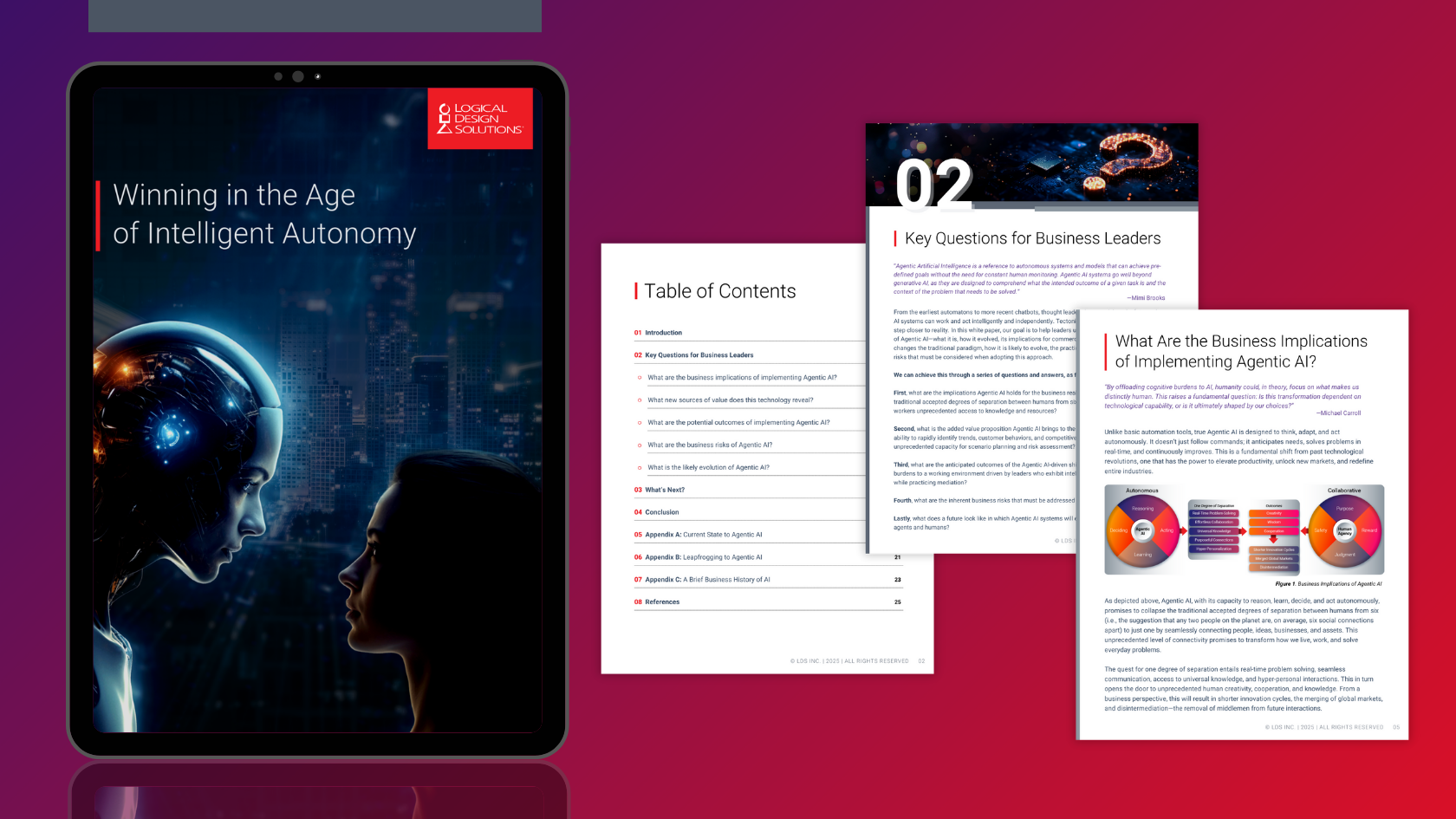
White Paper: Winning in the Age of Intelligent Autonomy
Specifically designed to answer key questions for business leaders, our latest white paper explains how Agentic AI will dramatically shift how businesses operate, compete, and grow using its capacity to autonomously reach decisions, execute strategies, and adapt to situations in real-time.
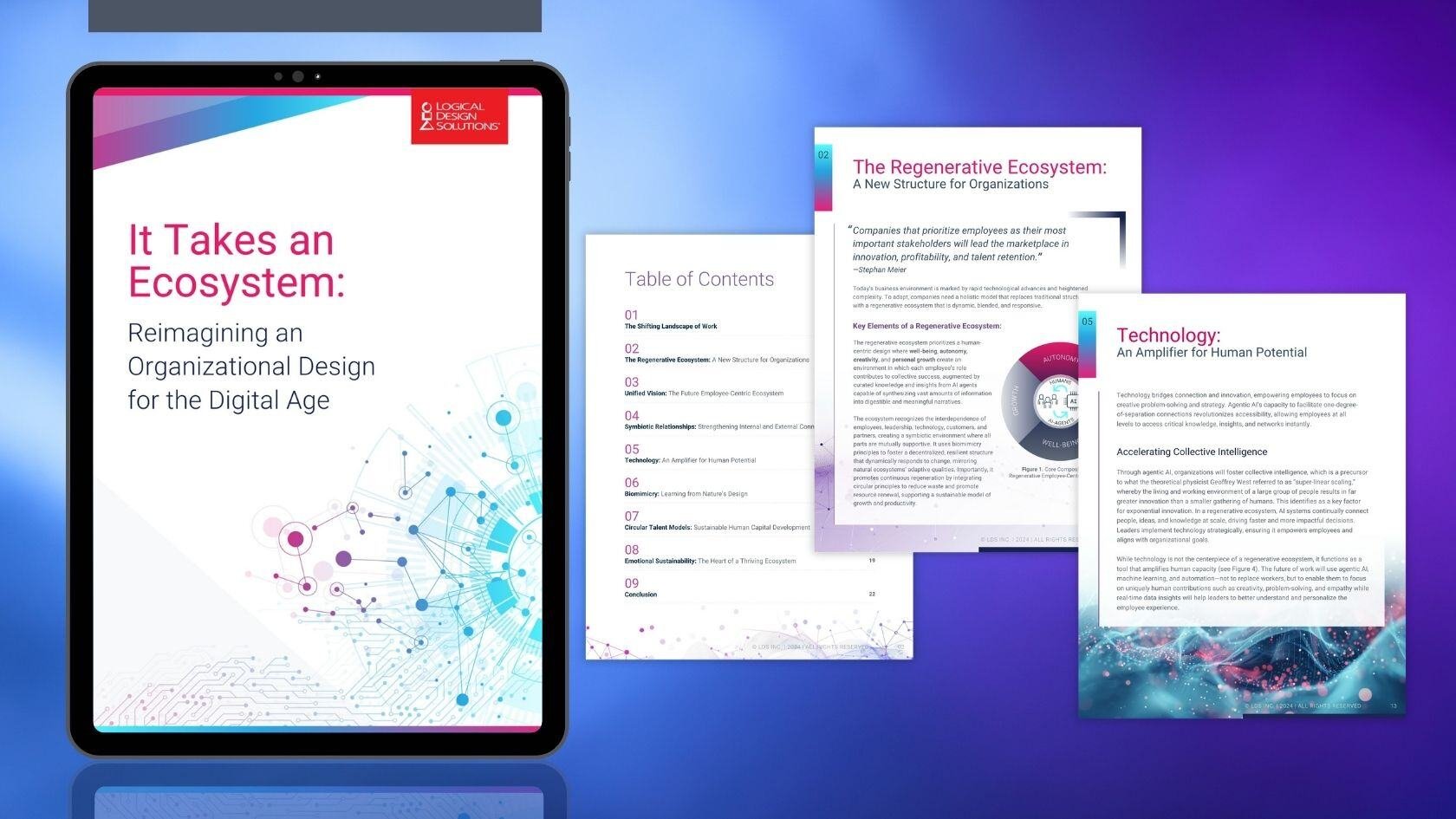
White Paper: It Takes an Ecosystem
Transformation is essential in today’s fast-evolving, competitive world. It Takes an Ecosystem explores a bold blueprint for an integrated workplace where human-machine collaboration drives the scale, agility, and innovation required to thrive in a complex, ever-changing environment.

White Paper: Organizational Debt
When organizations embark on digital transformation, there is often a focus on solving technical debt. Yet many transformation efforts stall or fail despite investing in digital infrastructure. In this white paper, we make the case that organizational debt is the real barrier to transformation and the sustainable momentum needed for long-term success.
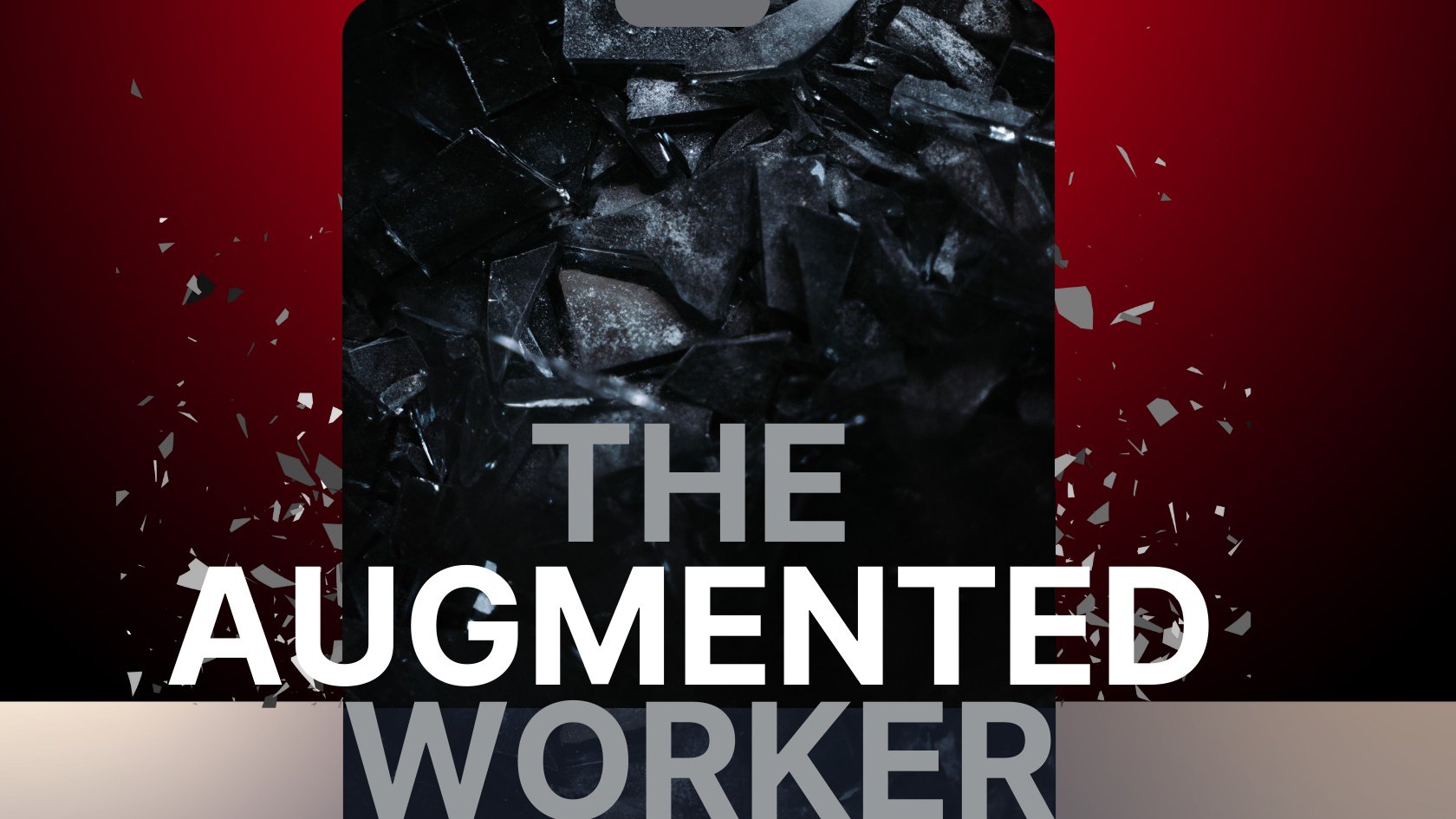
LDS On: The Augmented Worker
The "future of everything" work is rapidly evolving. View our latest video extract of our "The Augmented Worker" white paper where we discuss how humans fit into technological breakthroughs and how workers and AI should collaborate.
3 min read
The Future of Work: How Agentic AI, Biomimicry, and Circular Talent Models Are Redefining Organizations
Feb 5, 2025
Our Latest Thinking
Transforming organizations through digital experience strategy
A new video series dedicated to the discussion of Transformation Management
"LDS On" is a regular video series, hosted by CEO and digital transformation expert Mimi Brooks, that addresses topics of strategic interest for business leaders who are guiding their organizations through transformative change.
14 min read
White Paper: Winning in the Age of Intelligent Autonomy
Apr 4, 2025
3 min read
The Future of Work: How Agentic AI, Biomimicry, and Circular Talent Models Are Redefining Organizations
Feb 5, 2025
1 min read
LDS On: Leading a Purpose-Driven Organization in a Digital World Order, Part 2
Jan 20, 2025
A trusted partner to our clients for 35+ years
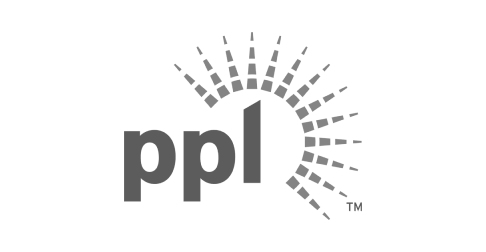




Reimagine Your Organization
Digital transformation continues to disrupt companies and the marketplace. Join Mimi on her bi-weekly Bold Agendas podcast for conversations with industry thought leaders as they discuss organizational, leadership, and worker challenges as technology reshapes organizations and redefines human work.
Mimi Brooks, CEO
Mimi founded Logical Design Solutions (LDS) in 1990 and has since led it to become a recognized brand among technology-focused management consultancies and a trusted partner to Fortune 500 business clients. Mimi is a certified Leadership Coach specializing in building leader adaptation and resilience in times of transformation and organizational change.
Mimi is also an industry thought leader, regularly authoring articles, white papers, and ebooks. She frequently presents to Fortune 500 leadership teams and in industry conference events around the world.
Mimi Brooks, CEO
Mimi founded Logical Design Solutions (LDS) in 1990 and has since led it to become a recognized brand among technology-focused management consultancies and a trusted partner to Fortune 500 business clients. Mimi is a certified Leadership Coach specializing in building leader adaptation and resilience in times of transformation and organizational change.
Mimi is also an industry thought leader, regularly authoring articles, white papers, and ebooks, and she frequently presents to Fortune 500 leadership teams and industry conference events around the world.
Years in business
Average years in Consulting
Fortune 500 Clients
WOrker lives improved
Get the Latest
Market-leading insights on the future of work from our desktop to yours.
Get the Latest
Market-leading insights on the future of work from our desktop to yours.

